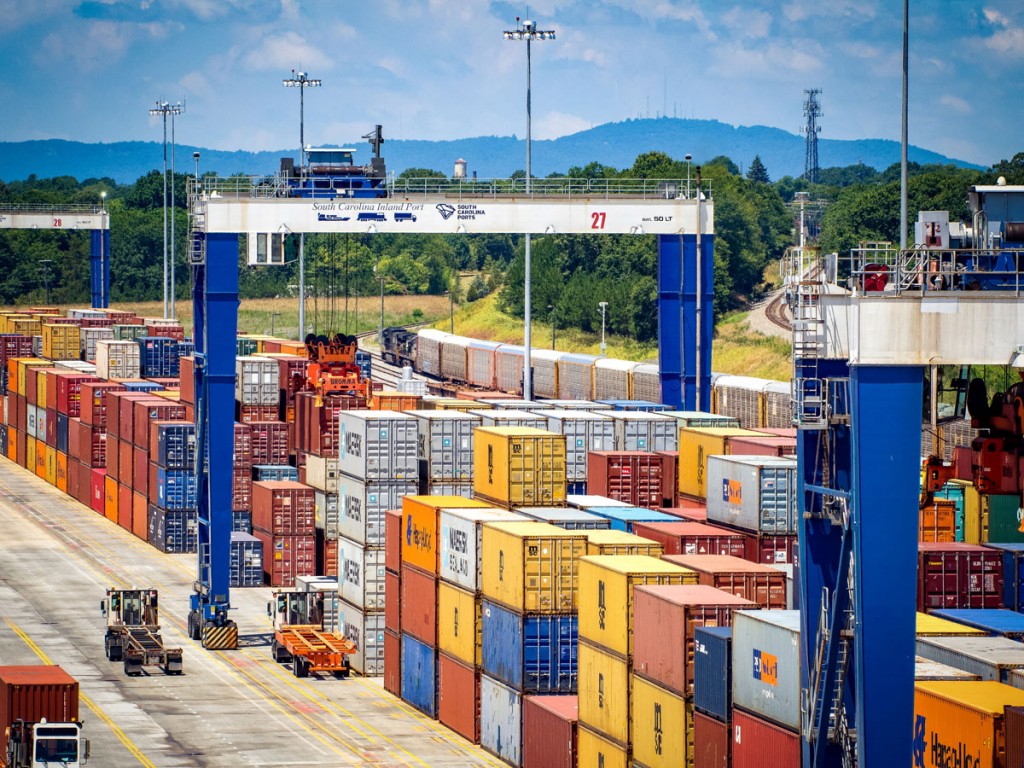Congestion, congestion, congestion – maritime and intermodal operations have been blighted by the challenge for many months. As all concerned – carriers in all modes, terminals, importers and exporters, port authorities, the federal government – struggle for solutions, Christoph Schoppmann of Hamburg Port Consulting (HPC), specialist strategists in freight terminal design and operation, explains how optimization of practical processes on the ground can help alleviate the pain.
Optimization is very personalized. It depends on the specific needs of each port, railhead, or intermodal terminal. Geographical location, nature of cargoes and position in the overall supply chain come into play. For some, optimization relies on automation, for others, its physical infrastructure development, or single window protocols.
Currently, we see widespread congestion due to the impact of disrupted supply chains, empty container shortage, significantly high dwell times and shortage of truck drivers. Additionally, the huge profits of shipping lines also create dynamics for the intermodal industry that challenge fundamental operating concepts. However, we must also consider potential future trends when demand drops. There will be more importance then put on perishable goods, food, medication and essential items. If such a drop in demand for manufactured goods is significant and terminals aren’t optimized by then, congestion, accessibility problems and low connectivity will continue to be very much the same problem as it is now.
Flexibility is key to the optimization required to handle such variability in the context of intermodal terminals. For instance, a grounded operation optimizes the use of space, i.e., there are options to at least temporarily further densify the storage. The existing infrastructure in grounded terminals can handle it, and the required equipment for a grounded operation is already available. However, there are also some advantages to the wheeled approach, especially if no restrictions in terms of area and other resource availability are present, the wheeled parking certainly has operational benefits (no additional stacking moves and potentially more accessible service for the truck drivers).
Looking at modal carrier’s responses to the situation, we start with ocean liner operators. We see that ocean carriers have an increasing requirement that the container terminals provide good and flexible hinterland connectivity by rail. Reasons for that are amongst others certainly the ongoing shortage of truck drivers. Additionally, the environmental aspects and challenges with road traffic (congestion) are gaining more and more in importance from a societal point of view.
Another critical observation is the tendency towards vertical integration of the big ocean carriers. They are looking to control more pieces of the supply chain, starting with their own marine terminals, and partly investing in hinterland rail terminals. This may result in some marine terminal operators acting as railroad and intermodal operators, creating their own integrated intermodal network.
These trends could assist in the aim for greater optimization along the supply chain. Suppose you look at intermodal transportation not as a sequence of detached individual transports but rather as an intermodal network. In that case, it is vital to use every wheel in the system in the best possible way. This includes especially dry port concepts/inland ports that serve as a connection point to the marine terminals and at the same time give relief to the scarce land resources in the seaport areas as they take over sorting functionality for the ports. At HPC, we have been working on a number of these projects along the coasts of North America.

HPC and South Carolina Ports
HPC has recently completed a commission from South Carolina Ports to assess the capacity expansion of its intermodal rail terminal at Port Greer in the Northern part of the state. We re-evaluated the initial design options, ensuring that the ‘rail-served’ inland port could handle growing cargo volumes despite the impacts of the ongoing supply chain disruptions.
Extending the range of the seaport at Charleston was a driving factor for the development inland, which enables the smooth movement of goods for customers from a facility closer to their manufacturing plants.
It was SC Port’s aim to increase their overall flexibility by relieving potential congestion at the seaport and respond to the supply chain disruptions that are more and more becoming a new normal. The Inland Port Greer commission analysed capacity limits and throughput rates, studying the influencing factors under different dwell time scenarios to map future supply chain resilience. As a result, some adjustment measures have been suggested to make the facility capable of handling up to 300,000 rail units.
Turning to the major rail operators, in response to the challenges we see both a location-by-location approach to terminal operations and development as well as a single systemwide network approach, depending on the railroad's actual function, its market situation and the terminals it already operates. If we look at an intermodal terminal with not only an origin/destination (O/D) functionality but also serving as a hub in a well-balanced intermodal network, a different approach is required than for some pure O/D terminals operated by the same railroad.
We also observe differences in the optimizing strategies of railroads: for example, some have a plan to modernize and improve technology across their whole network either all at once, or by testing new technologies through implementation at one terminal first before being rolled out to other facilities in the network. Other players focus on key terminals and consciously refrain from investing in the non-key facilities. So, the intermodal strategies of the railroads can be very much different.
In conclusion, the current drivers towards increased efficiency go beyond the immediate concerns over congestion and supply chain disruption; there are market demands that have ecological, economic, and political reasons. These are manifest in demands to reduce carbon footprint, to avoid congestion in local communities and attempting to overcome the problem of scarce resources in the road transportation sector.
All these criteria together drive decision-makers to invest in projects to optimize terminal operations, aiming to allocate the available resources in the best possible way. We believe a continuing trend in the future will be for road transportation to maintain its advantages over shorter distances, while the rail option will likely increase its share on medium and long-distance routes. In addition, a desire to integrate more and more pieces of the supply chain will be a crucial driver for some of the players (shipping lines, terminal operators) to optimize through investment in hinterland terminal infrastructure.

Christoph Schoppmann is responsible for terminal planning and logistics at HPC, focusing on intermodal projects. He has 18 years of professional experience in transport and logistics planning. He has advised logistics-related consulting and research projects for private clients, governmental organisations, trade associations, and international institutions during this time. As an expert and project manager, Christoph has been developing more than 50 terminals worldwide. Amongst these have been development plans and optimisation for container terminals, ports, logistics centres, and intermodal rail terminals. He is an expert in both the operation and financial analysis of such facilities. Christoph has worked on more than ten master and business plans for terminals and ports around the globe.

